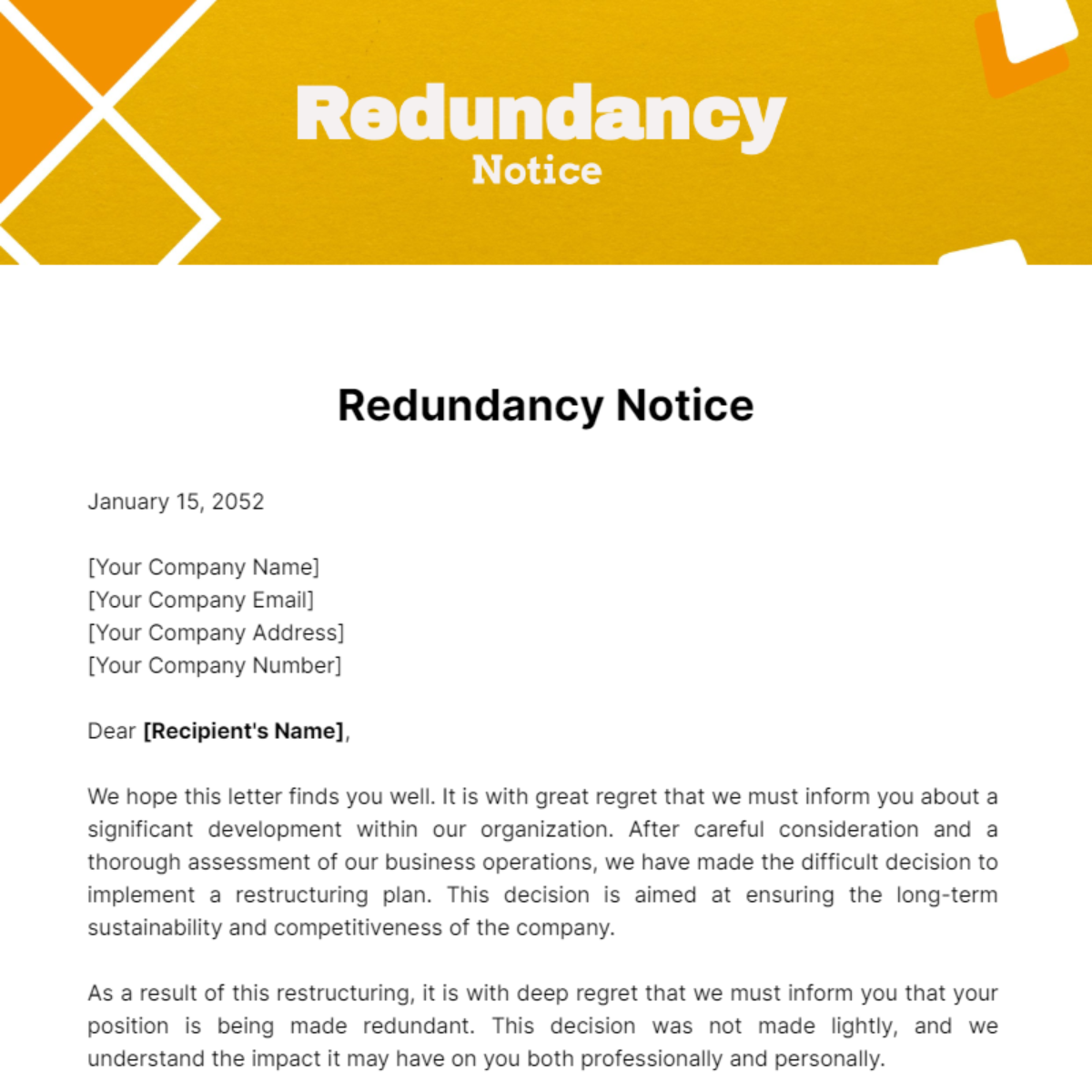If a Company Goes Bust Who Pays Redundancy? Legal Insights for UK Worker
If a Company Goes Bust Who Pays Redundancy? Legal Insights for UK Worker
Blog Article
Checking Out the Operational Dynamics of Firm Redundancy and Its Long-Term Sustainability

Redundancy Strategies for Company Continuity
In order to ensure nonstop operations, services must carry out efficient redundancy methods for business continuity. Redundancy in this context describes the replication of vital parts or functions within a system to reduce the effect of prospective failings. By including redundancy techniques, companies can enhance their strength versus disruptions caused by numerous elements such as natural catastrophes, tools failings, or cyber-attacks.
One common redundancy approach is the implementation of back-up systems and information storage space options. This entails developing matches of necessary data and systems that can be turned on in case of a primary system failure. Furthermore, companies can establish redundant interaction networks and power sources to maintain connection and operations throughout unforeseen events.
Furthermore, cross-training staff members to perform multiple functions within the firm can function as a beneficial redundancy technique. If essential personnel are unavailable due to ailment or various other factors, this guarantees that essential jobs can still be lugged out even. In general, effective redundancy strategies are essential for companies to maintain operational connection and reduce the impact of possible interruptions.
Effect of Redundancy on Organizational Strength
Given the important duty redundancy methods play in ensuring company connection, discovering the influence of redundancy on organizational durability comes to be crucial for recognizing the holistic operational dynamics of a business. Redundancy, when purposefully executed, can significantly add to enhancing an organization's durability in the face of unforeseen obstacles.
Furthermore, redundancy can reinforce worker morale and self-confidence, recognizing that there are backup strategies in place to address unanticipated scenarios. This feeling of protection can bring about raised productivity and an extra favorable job atmosphere. In addition, redundancy can cultivate technology and creative thinking within a company as employees really feel equipped to take calculated risks, knowing that there is a safety and security net to support my response them in instance of failing. Generally, the influence of redundancy on organizational durability is profound, forming the long-term sustainability and success of a company.
Stabilizing Effectiveness and Flexibility in Redundancy
Achieving a harmonious equilibrium in between operational performance and flexible flexibility is a critical obstacle in the calculated deployment of redundancy within companies. Efficient procedures are essential for keeping productivity and cost-effectiveness, ensuring that sources are used ideally. Nevertheless, too much emphasis on effectiveness alone can result in strength, making it challenging for companies to adjust to unforeseen adjustments or challenges. On the other hand, adaptability allows organizations to respond nimbly to progressing conditions, promoting advancement and strength. Yet, way too much versatility without a strong functional foundation can result in inadequacies and incongruity.
To stabilize performance and adaptability in redundancy preparation, organizations should meticulously assess their operational needs, market dynamics, and critical goals. Carrying out lean methods can boost efficiency by getting rid blog of and enhancing procedures waste, while cultivating a society of adaptability and continual improvement can improve versatility. Furthermore, investing in cross-training programs and robust communication channels can aid grow a flexible workforce efficient in taking care of varied jobs during periods of change. Ultimately, locating the appropriate balance between efficiency and flexibility is essential for building a lasting and resistant organization when faced with uncertainty.
Long-Term Sustainability With Redundancy Planning
To make certain enduring viability and security, organizations must purposefully align their redundancy preparation with long-term sustainability objectives, consequently integrating operational performance with flexible flexibility. Lasting sustainability through redundancy preparation involves more than simply temporary cost-cutting actions. It calls for a comprehensive calculated technique that anticipates future difficulties and possibilities. Companies should see redundancy not as a responsive solution to immediate issues however as an aggressive method for lasting success. By integrating redundancy preparation with sustainability objectives, companies can develop a resilient framework that can hold up against different market variations and internal adjustments.

Positive Procedures for Lasting Company Operations
How can business proactively improve their operational sustainability for long-term success? Applying aggressive actions is essential for companies intending to guarantee sustainable procedures.
In addition, promoting a society of continuous renovation and knowing within the organization can boost adaptability to changing market problems and consumer demands. Encouraging staff member participation in decision-making procedures and offering opportunities for specialist growth can increase spirits, efficiency, and general efficiency. Establishing clear objectives, checking vital efficiency indicators, and consistently evaluating progression are crucial elements of proactive sustainability monitoring.
Working together with suppliers, consumers, and other stakeholders to advertise sustainable methods throughout the supply chain can produce a causal sequence of positive influence - redundancy pay if company goes bust. By taking positive steps towards operational sustainability, companies can build strength, drive advancement, and safeguard their long-term success in an ever-evolving organization landscape
Final Thought

In the realm of organizational administration, the strategic deployment of firm redundancy stands as an essential a fantastic read yet intricate technique that demands a delicate equilibrium between functional efficiency and lasting viability. By studying the operational characteristics that underpin company redundancy and reviewing its broader implications for business resilience and versatility, a nuanced understanding of how redundancy methods can form the future trajectory of a business begins to unfold.Offered the important role redundancy methods play in making sure business continuity, discovering the impact of redundancy on business strength becomes crucial for comprehending the alternative functional dynamics of a firm. In general, the influence of redundancy on organizational durability is extensive, forming the long-lasting sustainability and success of a business.
In final thought, comprehending the functional characteristics of business redundancy is crucial for guaranteeing lasting sustainability.
Report this page